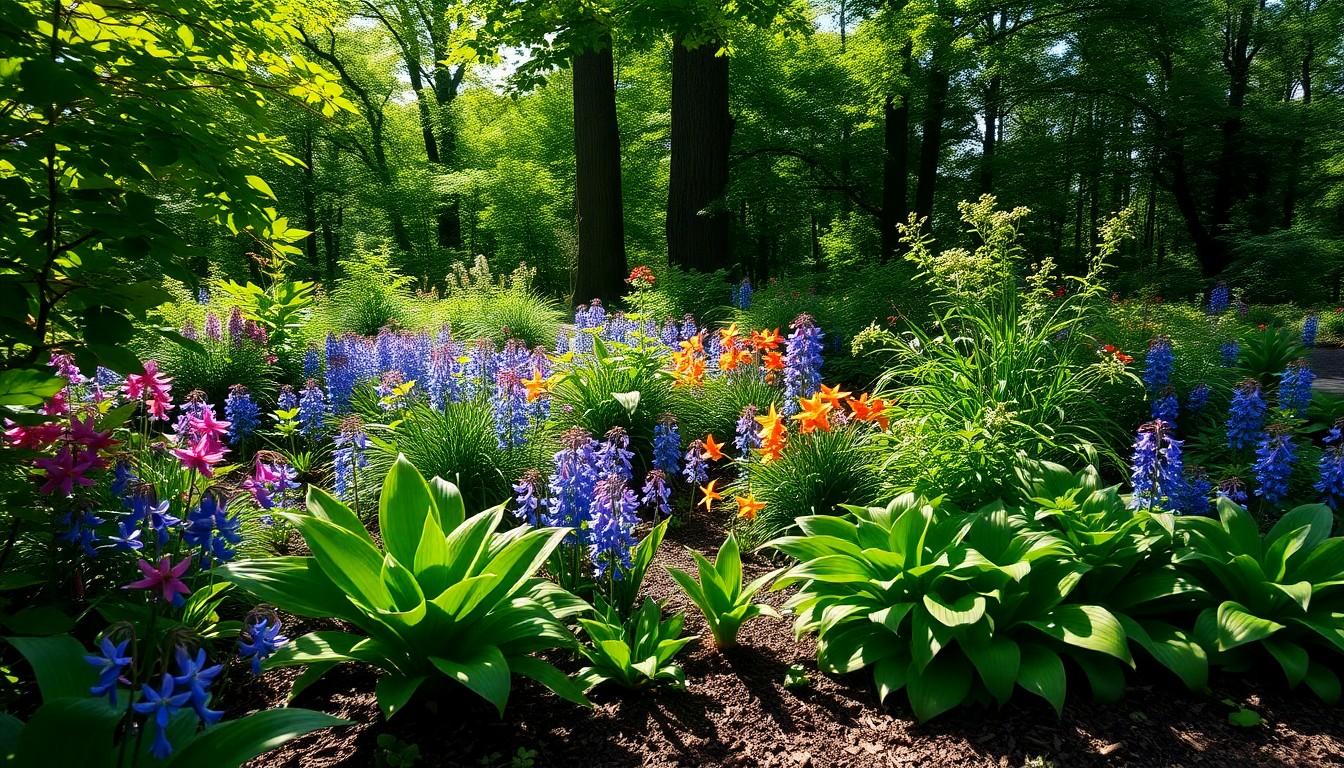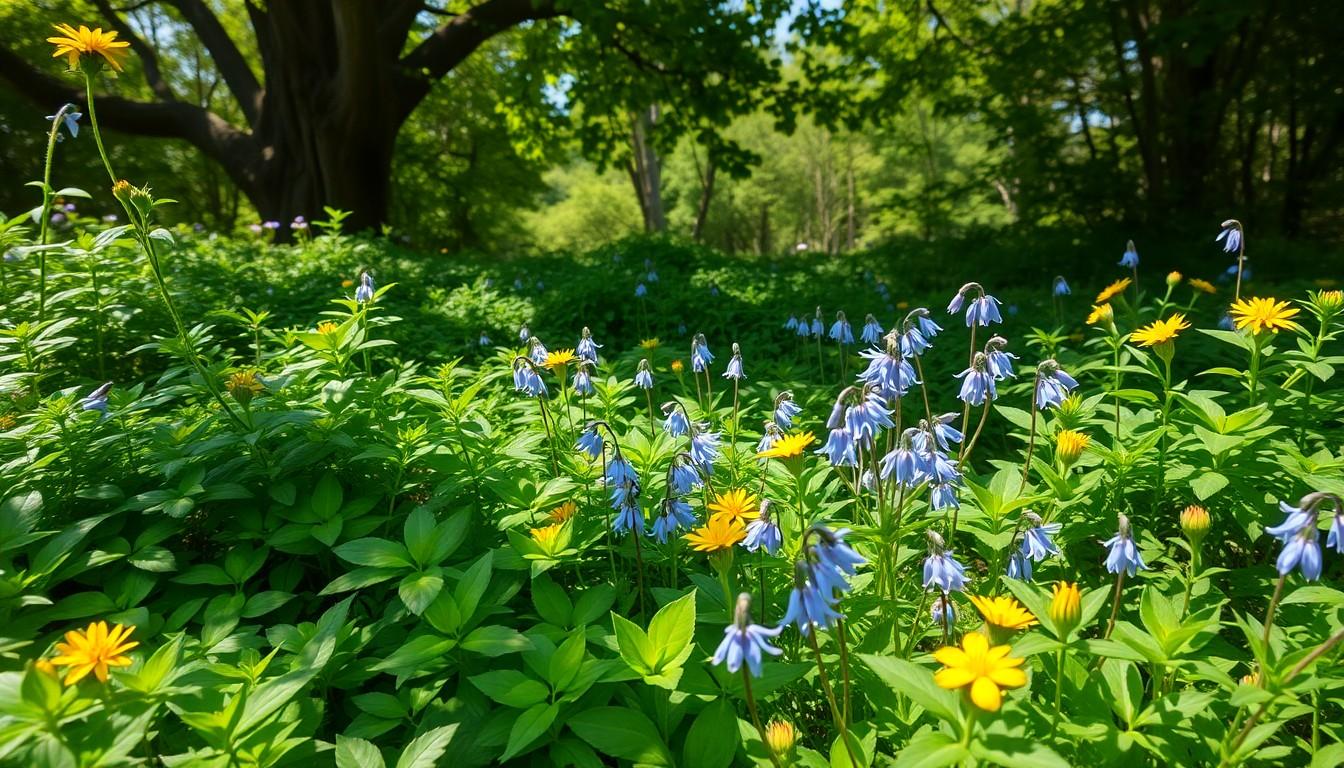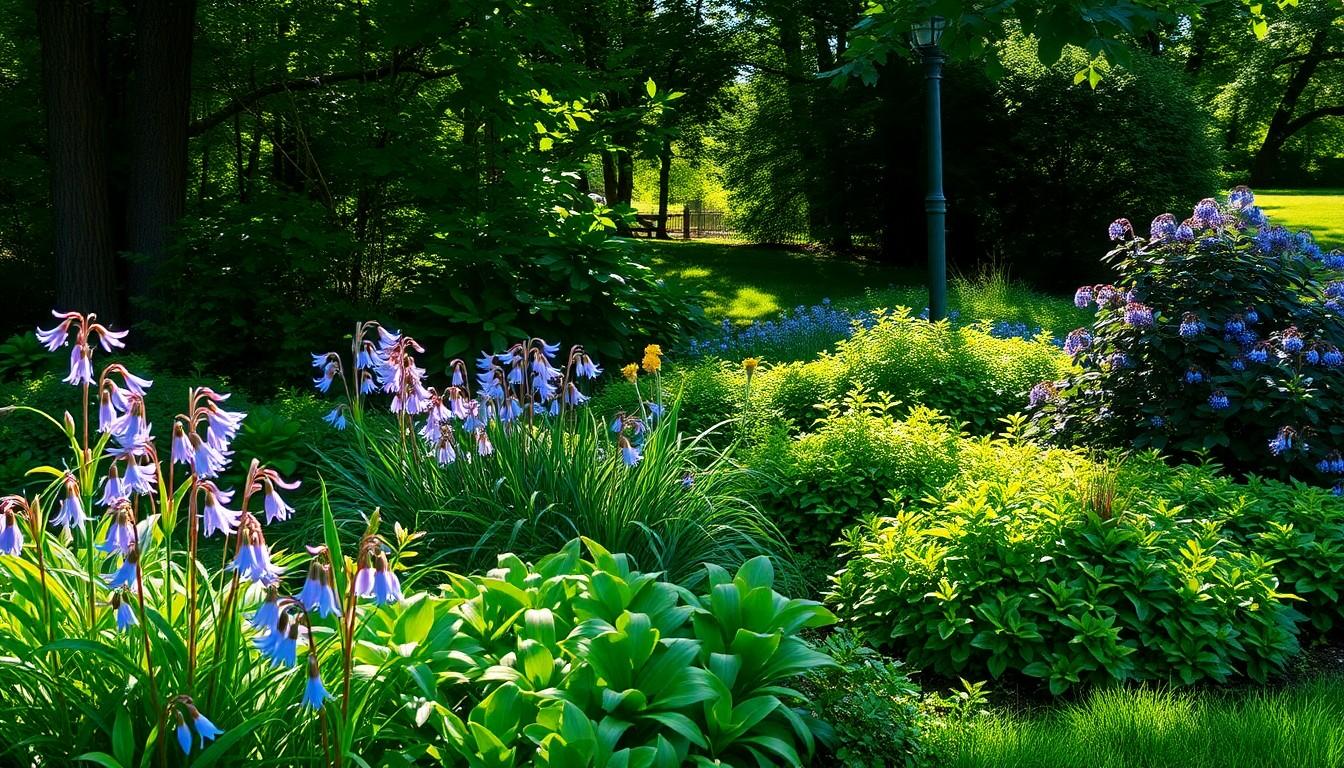Phone:
(701)814-6992
Physical address:
6296 Donnelly Plaza
Ratkeville, Bahamas.

Finding the right plants for shady spots can feel like searching for a unicorn at a petting zoo. But fear not! Native plants are here to save the day, transforming those dim corners of your yard into vibrant havens. They’re not just pretty faces; they thrive in local conditions and support the ecosystem, making them the ultimate multitaskers.
Native plants offer numerous benefits in shaded garden areas. These advantages extend to environmental factors as well as aesthetic contributions.
Using native plants supports local ecosystems. These plants create habitats for native wildlife, including birds and beneficial insects. They require less water and maintenance compared to non-native species, promoting sustainability. Drought resistance often characterizes native plants, making them well-suited for varying moisture levels. Soil health improves with their deep root systems, reducing erosion. Incorporating native plants leads to decreased reliance on chemical fertilizers and pesticides. This organic approach fosters a healthier garden environment.
Aesthetically, native plants enhance the beauty of shady spaces. They provide a diverse range of colors, textures, and shapes. Seasonal interest remains high, as many native species bloom at different times throughout the year. Planting combinations can create visually striking displays. Form and structure contribute to a layered look, adding depth to gardens. Native plants blend seamlessly with existing landscapes, creating a natural ambiance. Landscapes featuring these plants appear harmonious and inviting, making shaded areas more enjoyable.

Several native plants thrive in shaded regions, offering beauty and ecological benefits. Selecting the right ones transforms these areas into vibrant spaces.
Ground covers like Creeping Phlox provide excellent coverage and low maintenance. Species such as Wild Ginger flourish in moist, shady conditions, making them ideal for forested gardens. Another option, Pennsylvania Sedge, thrives in partial to full shade and offers a soft, grassy texture. Some varieties, including Green and Gold, not only blanket the ground but also produce cheerful yellow blooms in spring. These plants play a crucial role in reducing soil erosion and suppressing weeds.
Shrubs such as Inkberry holly adapt well to shaded environments. This evergreen maintains its foliage year-round, adding structure to the garden. Another popular choice, Spicebush, produces fragrant flowers and attractive foliage, providing visual interest throughout the seasons. Mountain Laurel exhibits beautiful clusters of pink and white blooms, attracting pollinators like bees and butterflies. These shrubs enhance biodiversity while requiring less maintenance compared to non-native counterparts.
Perennials suitable for shady areas include Virginia Bluebell, a springtime favorite known for its vibrant blue flowers. Additionally, Turtlehead thrives in wet, shaded locations, adding unique form and color. Hostas provide striking foliage in various shades of green and even variegated forms, making them a garden staple. Goldenseal not only offers eye-catching leaves but also medicinal properties, appealing to both aesthetics and functionality. Each of these plants contributes to a rich and diverse ecosystem in shaded spaces.
Growing native plants in shaded areas requires attention to specific factors. Soil quality and hydration play crucial roles in their success.

Soil preparation enhances the growth of native plants in shaded areas. Start by testing the soil to determine its pH and nutrient levels. Amendments may include organic matter like compost or well-rotted leaf mold that improves drainage and fertility. Native plants often prefer loamy or sandy soils, so consider adding these materials where applicable. Incorporating mulch helps retain soil moisture and suppress weeds, creating a conducive environment for growth. Finally, ensure proper aeration, which encourages root development and healthy plant structures.
Watering techniques influence the vitality of native plants in shaded gardens. Water deeply and infrequently to encourage robust root systems. An ideal approach involves applying water early in the day to minimize evaporation. Using soaker hoses or drip irrigation systems promotes even distribution and reduces fungal diseases. Monitor soil moisture to adjust watering based on seasonal rainfall and temperature fluctuations. Additionally, consider the specific needs of each plant, as some may require slightly more or less water than others.
Native plants thrive in shaded areas, yet challenges can arise. Understanding these issues helps ensure successful growth.
Pests pose a significant challenge for native plants in shaded environments. Insects like aphids and snails can damage foliage, affecting overall health. Fungal diseases often thrive in humid, low-light conditions, leading to issues such as powdery mildew. Symptoms include yellowing leaves and reduced vigor. Maintaining healthy plants with proper air circulation and moisture management helps mitigate these problems. Regularly inspecting plants allows early detection of pest infestations, ensuring timely intervention. Implementing natural pest control methods, such as introducing beneficial insects or using organic treatments, further safeguards the health of native plants.
Competition from other plants can hinder the growth of native species in shaded areas. In particular, invasive species can outcompete native plants for light, nutrients, and water. Dense ground covers may create a challenging environment, limiting growth opportunities for targeted natives. Encouraging native plant establishment requires careful monitoring of surrounding vegetation. Regular maintenance, such as removing invasive plants, allows natives to thrive. Creating a robust planting strategy helps position native plants effectively, ensuring they get necessary resources. Identifying compatible native plants that can coexist supports a balanced ecosystem in the shade.